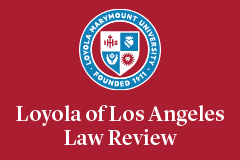Abstract
Charitable gifts often come with strings attached. Donors limit their gifts in many ways, typically by restricting an asset’s use or purpose, the timing of spending (as in an endowment), and by securing naming rights. Donors also limit their gifts by giving to a charitable intermediary such as a donor-advised fund or private foundation, thereby retaining effective control over the distribution or investment of the donated asset. Donor limits are perpetual in nature. This Article assesses the law of donor limits. The Article explains that non-tax legal rules strongly favor donor limits; they are easy for donors to impose and hard for charities to eliminate. Federal tax rules also favor donor limits by treating most donor-limited gifts the same as unrestricted gifts for purposes of the income and estate tax charitable deductions. As a result, donor limits are common and burden a substantial portion of charitable assets. The Article finds based on a review of Form 990 data that, for one hundred of the leading charities in the United States, 66 percent of their $525 billion in net assets are subject to donor limits, meaning these charities have full control of only 34 percent of assets. For the nineteen private universities in this group, 67 percent of the total endowment is donor limited. This tax law subsidy for dead hand control entails many harms, including to the public interest, charitable autonomy, pluralism, the operational funding of charities, imposition of compliance costs, and subsidizing gains to donors. The Article considers tax reform options for donor-limited gifts. These include treating donor limits as retained rights or return benefits, estate tax reform to discourage giving to intermediaries, curtailing donor-limited gifts from donor-advised funds, and taking donor limits into account for purposes of any new giving incentive, such as a nonitemizer deduction or charitable giving credit. Importantly, under any tax reform approach, the power of donors to impose limits would not change. Donors could continue to limit their gifts in perpetuity as they currently do, but charity, and society, would be relieved from some of the costs of the dead hand.Charitable gifts often come with strings attached. Donors limit their gifts in many ways, typically by restricting an asset’s use or purpose, the timing of spending (as in an endowment), and by securing naming rights. Donors also limit their gifts by giving to a charitable intermediary such as a donor-advised fund or private foundation, thereby retaining effective control over the distribution or investment of the donated asset. Donor limits are perpetual in nature. This Article assesses the law of donor limits. The Article explains that non-tax legal rules strongly favor donor limits; they are easy for donors to impose and hard for charities to eliminate. Federal tax rules also favor donor limits by treating most donor-limited gifts the same as unrestricted gifts for purposes of the income and estate tax charitable deductions. As a result, donor limits are common and burden a substantial portion of charitable assets. The Article finds based on a review of Form 990 data that, for one hundred of the leading charities in the United States, 66 percent of their $525 billion in net assets are subject to donor limits, meaning these charities have full control of only 34 percent of assets. For the nineteen private universities in this group, 67 percent of the total endowment is donor limited. This tax law subsidy for dead hand control entails many harms, including to the public interest, charitable autonomy, pluralism, the operational funding of charities, imposition of compliance costs, and subsidizing gains to donors. The Article considers tax reform options for donor-limited gifts. These include treating donor limits as retained rights or return benefits, estate tax reform to discourage giving to intermediaries, curtailing donor-limited gifts from donor-advised funds, and taking donor limits into account for purposes of any new giving incentive, such as a nonitemizer deduction or charitable giving credit. Importantly, under any tax reform approach, the power of donors to impose limits would not change. Donors could continue to limit their gifts in perpetuity as they currently do, but charity, and society, would be relieved from some of the costs of the dead hand.
Recommended Citation
Roger Colinvaux,
Strings Are Attached: Shining a Spotlight on the Hidden Subsidy for Perpetual Donor Limits on Gifts,
56 Loy. L.A. L. Rev. 1169
(2023).
Available at: https://digitalcommons.lmu.edu/llr/vol56/iss4/3


